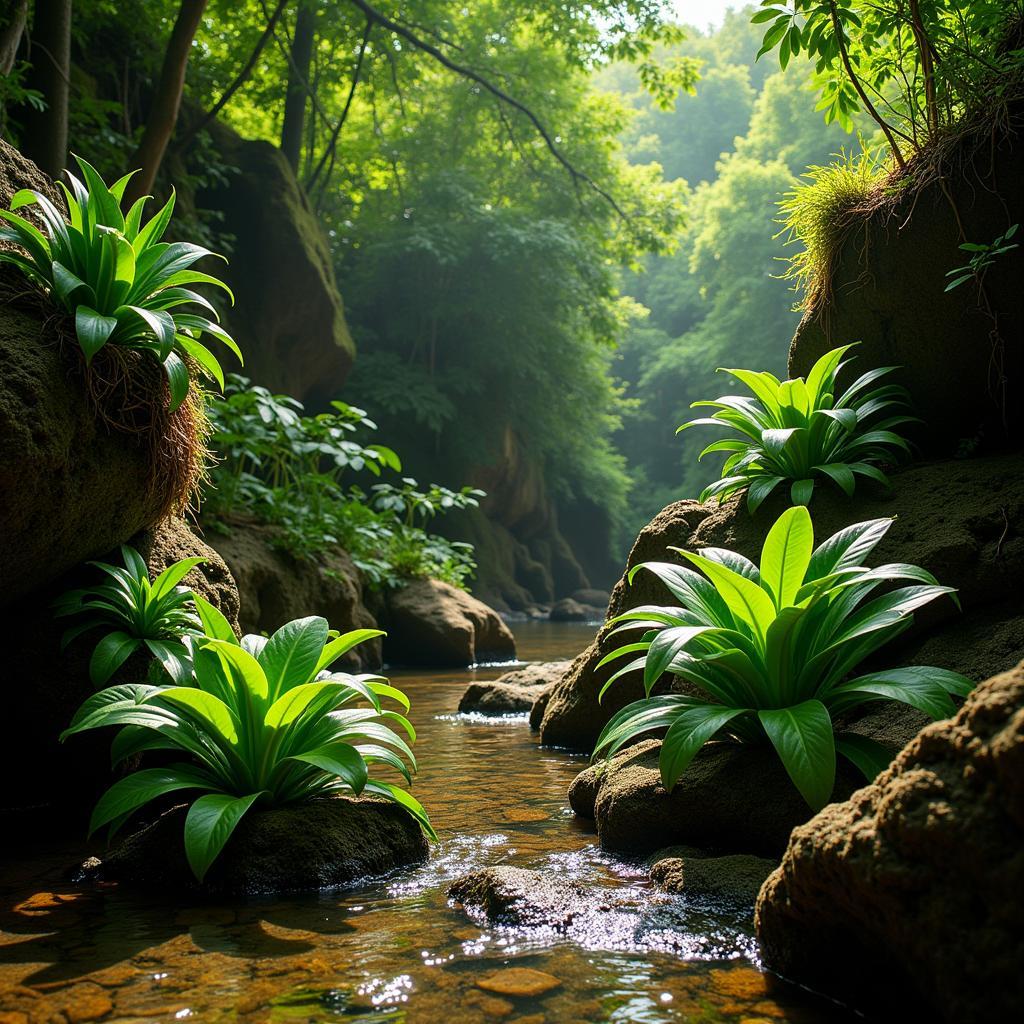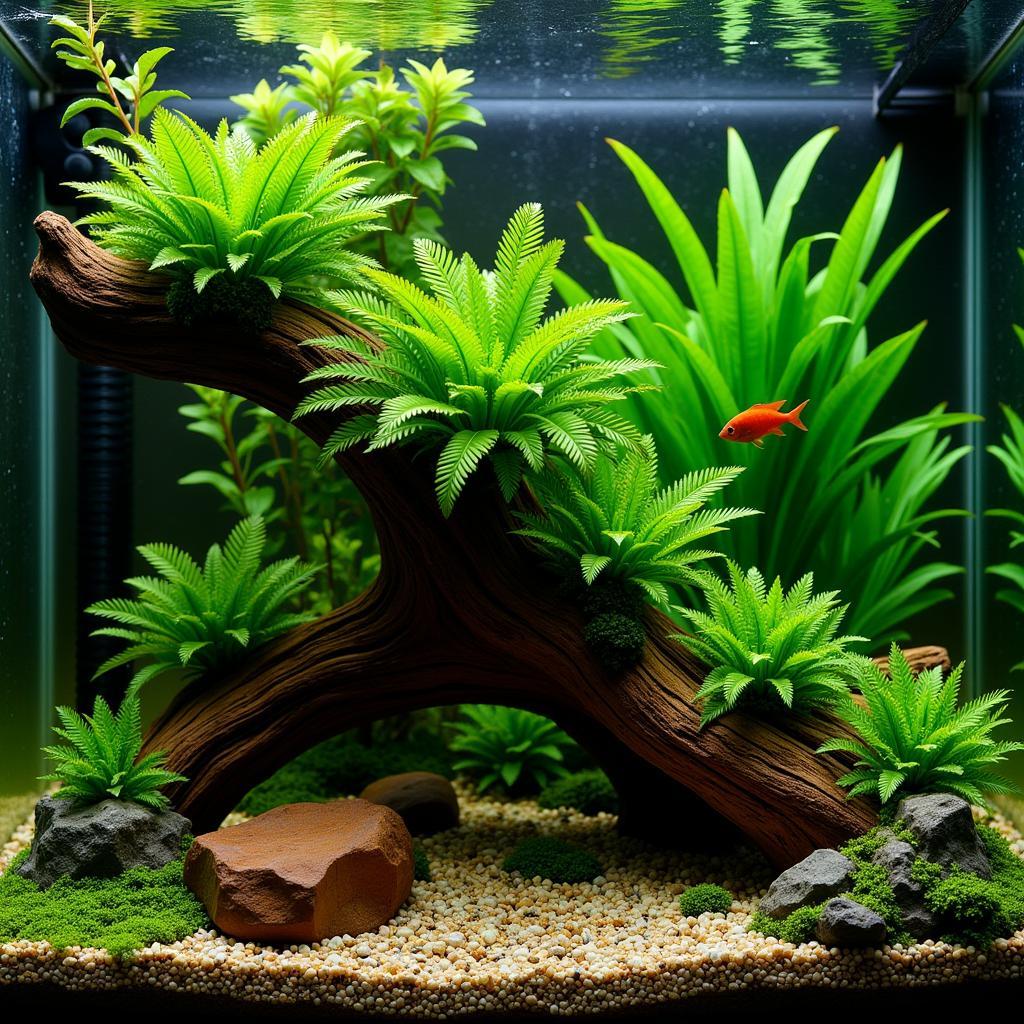Discovering the Wonders of the African Anubias
African Anubias are a popular choice for aquarium enthusiasts, prized for their hardiness, low-maintenance nature, and unique aesthetic appeal. These aquatic plants, originating from the diverse river systems of West Africa, offer a touch of the wild and untamed beauty of the African continent to any aquascape. Their dark green, robust leaves create a striking contrast against lighter-colored substrates and provide excellent cover for smaller fish or invertebrates.
Anubias species are known for their ability to thrive in various water conditions, making them suitable for both beginners and experienced aquarists. They are slow-growing, requiring minimal intervention, and are surprisingly tolerant of low light conditions. This makes them a versatile addition to any tank setup, capable of adapting to a range of environments. Beyond their practical advantages, African Anubias offer a fascinating glimpse into the rich biodiversity of the African continent.
Exploring the African Anubias Family
The Anubias genus encompasses several species, each possessing unique characteristics. From the smaller Anubias nana varieties, perfect for foreground planting and creating intricate miniature landscapes, to the larger Anubias barteri species, which can become impressive centerpieces, the choices are abundant. Their rhizomatous growth habit allows them to be easily attached to rocks or driftwood, adding a natural and dynamic element to the aquascape. These resilient plants can also be grown partially submerged, making them a popular choice for paludariums and terrariums, further showcasing their adaptability.
Anubias can be found growing in the shaded banks of rivers and streams, often clinging to rocks or submerged branches. Their dark green leaves, which can range from a smooth, rounded shape to a more elongated form depending on the species, are well-adapted to withstand the currents and varying water levels found in their natural habitat. This resilience translates to easy care in the home aquarium, making them an ideal choice for hobbyists of all skill levels. Anubias are exceptionally tolerant of a wide range of water parameters, adding to their appeal. Check out this interesting read on an African dwarf frog bowl.
 African Anubias in Natural Habitat
African Anubias in Natural Habitat
Caring for Your African Anubias
Despite their robustness, understanding the specific needs of African Anubias will ensure their optimal growth and health in your aquarium. They thrive in slightly acidic to neutral pH levels and prefer soft to moderately hard water. While they are tolerant of low light, providing moderate lighting can encourage more vigorous growth. It is crucial to remember that the rhizome, the thick horizontal stem from which the leaves and roots grow, should not be buried beneath the substrate. Burying the rhizome can lead to rot and the eventual demise of the plant.
Instead, the rhizome should be attached to rocks, driftwood, or other hardscape elements, allowing the roots to anchor themselves securely. Anubias propagate easily through rhizome division. Simply cut a section of the rhizome with at least a few leaves and roots attached and anchor it to a new location. Patience is key when cultivating African Anubias, as they are known for their slow growth rate. However, their resilience and longevity make them a rewarding addition to any aquatic environment. Do African dwarf frog and betta fish get along? Here’s some information.
 African Anubias Aquarium Setup
African Anubias Aquarium Setup
Common Problems and Solutions
While African Anubias are generally hardy, they can occasionally face issues like algae growth on their leaves or slow growth. Algae growth can often be attributed to excessive lighting or nutrient imbalances in the water. Adjusting lighting and performing regular water changes can help address this issue. Slow growth can be a normal characteristic of these plants. However, providing adequate nutrients and ensuring optimal water parameters can promote healthier and slightly faster growth. Some aquarists also find success using liquid fertilizers specifically designed for aquatic plants. See some charming African dwarf frog images for inspiration.
Remember, these slow-growing plants are a long-term investment for your aquarium, and patience is key to their success. Sometimes, Anubias leaves can develop small holes, often a sign of a potassium deficiency. Supplementing with a potassium-rich fertilizer can resolve this issue. The African banded barb is a great companion fish.
 Healthy African Anubias
Healthy African Anubias
Conclusion
The African Anubias is a testament to the rich biodiversity and captivating beauty of the African continent. Its resilience, adaptability, and low-maintenance nature make it a popular and rewarding choice for aquarium enthusiasts of all experience levels. By understanding their specific needs and addressing potential challenges, you can cultivate a thriving Anubias population in your aquarium, bringing a piece of Africa’s aquatic wonders into your home. Explore the vibrant world of African jewelfish all colour variations.
FAQ
- How often should I water my Anubias? (They are fully aquatic, so they live in the water.)
- How do I propagate Anubias? (By dividing the rhizome.)
- Can Anubias grow in low light? (Yes, they tolerate low light well.)
- What are the signs of a healthy Anubias? (Deep green leaves and a firm rhizome.)
- What kind of fertilizer should I use for Anubias? (Liquid fertilizer designed for aquatic plants.)
- What fish can live with Anubias? (Many peaceful community fish are compatible with Anubias.)
- How do I attach Anubias to driftwood? (Use fishing line or cotton thread.)
Here are some other questions that might interest you:
- What are the best substrates for planted tanks?
- How do I maintain a healthy aquarium ecosystem?
- What are some other low-maintenance aquarium plants?
For further assistance, please contact us at:
Phone Number: +255768904061
Email: kaka.mag@gmail.com
Address: Mbarali DC Mawindi, Kangaga, Tanzania.
Our customer service team is available 24/7.
